Q&A: Prioritizing Pharmacy Technician Well-Being
Taylor Watterson, PharmD, PhD, discusses the primary contributors to stress or frustration among pharmacy technicians and how to fix them.
Pharmacy technicians face significant stress from high workloads, understaffing, and the pressure to meet both patient care and business goals. These demands often lead to burnout, especially when there isn’t enough time or support to complete tasks. Technicians frequently interact with frustrated or unwell patients, which can result in emotionally taxing or unsafe situations. Improving safety, ensuring adequate rest, reducing workload, and recognizing technicians’ contributions can help improve their well-being and support better patient care.
Drug Topics recently sat down with Taylor Watterson, PharmD, PhD, assistant professor at the University of Illinois Chicago Retzky College of Pharmacy and an author on the study, to discuss the primary contributors to stress or frustration among pharmacy technicians today and immediate steps that can be taken to reduce technician workload and prevent burnout.
Drug Topics: What are the primary contributors to stress or frustration among pharmacy technicians today?
Taylor Watterson, PharmD, PhD: Most of my experience comes from community pharmacy, those settings that we think of traditionally as retail or large chains or even independently owned pharmacies, Most of the stressors are primarily dealing with this idea of workload volume, but not just the volume, also the lack of resources.
The area of research that I study is called occupational fatigue, which is essentially your body telling you that you need rest. It manifests from this idea that we have too much to do at work and not enough resources to be able to do them. That can look like many things, especially for pharmacy technicians. That can be the script volume that they're asked to perform, or the number of tasks that they're asked to do, the number of different avenues in which the patients can access the pharmacy, whether that's through drive thru or emails or any other number of ways of filling of the prescriptions. The managing of the inventory, the managing of the technology, and then also, on the flip side, this limited resources to do that with.
I think one of the biggest resources that we think of in pharmacy specifically is, yes, manpower, yes people, but also time. Community pharmacy in particular is one of the few health care professions that is both a health care establishment, but also for profit. How are you trying to balance all of these demands, all of these resources, while still, at the end of the day, considering your bottom line? I think that's where a lot of the stress comes from, and frustration, primarily in pharmacy technicians. Trying to balance all of those things in the course of a normal day.
I'll say on top of that, and one of the areas that we're seeing leads to frustration a lot of times in some of the work that we're dealing with, is some of the interactions with patients today. Again, community pharmacy is a unique situation in health care, where patients don't always want to be there. If they're coming to the pharmacy, it means that they likely need a prescription for something, or have some sort of either concern or ailment, and maybe they don't want to be taking the medication, maybe they don't feel well. It's a fine balance of navigating all of that on top of the complex nature post COVID-19 we're seeing in a lot of consumer facing roles, even outside of health care.
I think there's a lot of things that they're balancing, a lot of things that are contributing to stress. There's a lot that our community pharmacy technicians are doing, all while being the backbone of our community pharmacies. I would say some of those are some of the biggest.
Drug Topics: What immediate steps can be taken to reduce pharmacy technician workload and prevent burnout?
Watterson: In a recent paper looking at pharmacy technician well-being, the framework that we used to outline this idea of conceptualizing well-being was the Surgeon General's Framework for Workplace Mental Health and Well-being, which really outlines 5 key themes: protection from harm, connection and community, work-life harmony, mattering at work, and opportunity for growth.1 It also lines up with Maslow's hierarchy of needs when we think about right what do we need to promote optimal well-being?
I think in the immediate steps, one of the biggest ones that we can focus most easily on is this idea of protection from harm and making our community pharmacy technicians feel safe, both physically and psychologically. We see this more, and there's obviously been a lot of coverage in the news about violence against health care workers, but also violence against pharmacy personnel, Making sure that there are steps in place and adequate protections for those individuals so that they feel safe at work and safe to show up at work.
There's also been a push recently, both nationally and then in individual corporations, looking at patient Code of Conduct. You may walk into a pharmacy that says, “reminder that while we are taking care of you, we are someone's loved one.” Really thinking about trying to humanize this profession. There's a whole other reason why patients may be behaving that way, which isn't necessarily their problem, but regardless, thinking about making sure our technicians are safe and feel protected, but also making sure that our pharmacy staff has training on the other end of how to handle that, whether that's harassment, sexual harassment, physical threats of violence. Oftentimes the pharmacist in charge has very little training of how to deal with those aggravated patients. That's kind of step one.
Also having support from organizations to support those decisions that are made. I've talked to pharmacists who say, “We have a patient who is behaving inappropriately, we enact steps to say they need to leave or we're happy to take care of you in another way. The patient complains, then the company sends them a $25 gift card. That rewards that behavior. Really feeling support from the organization as well to be able to handle some of those circumstances. Also making sure that our technicians feel safe physically. Some of that can be trainings and educating patients about appropriate conduct, also just what happens behind the scenes.
The other one that I think about is physical protection from harm in terms of fatigue. Thinking about rest breaks, making sure that they can go to the bathroom when they need to, and eating food. Those lunch breaks, which we've seen have become more common, but are not necessarily commonplace for our pharmacy staff to both take those breaks but also have access to them. I was talking to pharmacy technicians who say, “Yeah, our company provides us lunch breaks, but we don't take them because we know that our work is just going to keep piling up, and it's just going to be more of a mess when we come back later.” That's not really how you do restful or restorative work. That's not refreshing or reducing that fatigue in any way. Making sure they have access to those things and feel comfortable being in a culture that encourages them to take those breaks. Also protection from physical harm, in terms of standing or preventing injuries or any number of things. Making sure they can get adequate sleep and rest and recovery. Thinking about on a larger scale what those fatigue risk management systems might look like in terms of how we can better balance our work demands and work resources.
I think some of the other things that are more easy on an immediate basis are things like building connection and community within the pharmacy staff. Providing opportunities to celebrate and thank the technicians and being transparent about what's going on in the pharmacy and giving them a real say in some of the organizational operational procedures that happen. They are a critical member of the pharmacy workforce, and giving them a say in making an organization that works best for them.
To summarize, protection from harm, and all of the different ways that that looks like, including training for pharmacy staff about workplace safety. Allowing sufficient breaks and also scheduling to allow sufficient rest. Then figuring out ways to better balance these work demands with resources, whether that's hiring new staff, whether that's reducing the work demands, and being thoughtful about that.
READ MORE:
References
1. Fick G, Osei J, Kim S, et al. A narrative literature review: Community pharmacy technician well-being and its implications. J Am Pharm Assoc (2003). 2025 May 9:102419. doi: 10.1016/j.japh.2025.102419. Epub ahead of print. PMID: 40349976.
Newsletter
Pharmacy practice is always changing. Stay ahead of the curve with the Drug Topics newsletter and get the latest drug information, industry trends, and patient care tips.






































































































































